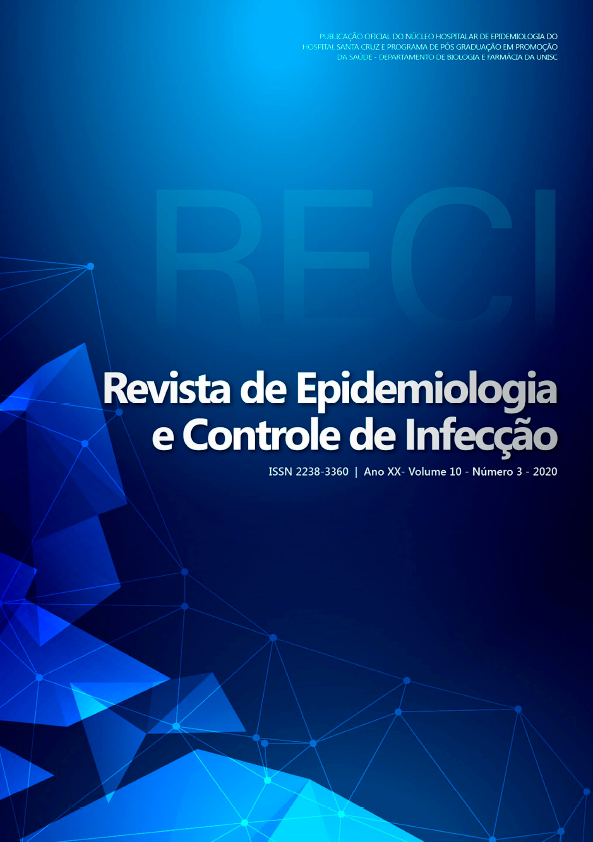Bacterial vaginosis: prevalence, risk profile and association with sexually transmitted infections
DOI:
https://doi.org/10.17058/jeic.v10i3.14984Palavras-chave:
Bacterial vaginosis. Cell biology. Molecular biology. Prevalence.Resumo
Background and Objectives: Bacterial vaginosis (BV) is the most common cause of vaginal discharge in the world. The study aimed to estimate the prevalence and to identify risk factors associated with bacterial vaginosis. Methods: A cross-sectional study was conducted in Ouro Preto, Brazil, between February and December 2017. Three hundred and forty-one women aged 18 years or older, users of the Brazilian Unified Health System, participated in this study. Women who used oral or topical antibiotics in the four weeks prior to the sample collection and women who had undergone a total hysterectomy were excluded from the study. After signing the Informed Consent Form and filling out a questionnaire containing sociodemographic, behavioral and sexual data, the participants were directed to the collection room, where the nurse collected the samples for the preventive examination of the cervix and also two vaginal swabs. Vaginal swabs and cervical samples were analyzed for cytological abnormalities and BV using Gram staining and cytology. Pathogens causing sexually transmitted infections (STIs) were identified by Polymerase Chain Reaction (PCR). For the analysis of the data, statistical package STATA version 10.0 was used. This study was approved by the Research Ethics Committee of the Federal University of Ouro Preto (UFOP). Results: During the study, 341 women were evaluated. The prevalence of BV using Gram staining (32.5% [CI95% 27.7=37.7%]) and cytology (27.7% [CI95% 23.0=32.8%]) was similar, however, the sensitivity of cytology was lower (77.8%). Risk factors associated with BV were smoking (IRR 1.5[CI95%: 1.1 = 2.1]), use of an intrauterine device (IRR 2.8 [CI95%: 1.2 = 6.5]), and past medical history of BV (IRR 1.5 [CI95%: 1.1 = 2.1]). Correlation between the presence of BV and Trichomonas vaginalis (TV) infection (r=0.24) was observed. Conclusion: The prevalence of BV was affected by life habits and was prevalent in women with TV. Thus, behavioral and social prevention approaches to women with diverse risk profiles may help mitigate TV/BV prevalence and recurrence of BV.Downloads
Downloads
Publicado
Como Citar
Edição
Seção
Licença
Copyright (c) 2020 Pedro Moregola Teixeira, Wendel Coura Vital, Nayara Nascimento Toledo Silva, Angélica Alves Lima, Cláudia Martins Carneiro, Luiz Fernando de Medeiros Teixeira, Glenda Nicioli da Silva

Este trabalho está licenciado sob uma licença Creative Commons Attribution 4.0 International License.
The author must state that the paper is original (has not been published previously), not infringing any copyright or other ownership right involving third parties. Once the paper is submitted, the Journal reserves the right to make normative changes, such as spelling and grammar, in order to maintain the language standard, but respecting the author’s style. The published papers become ownership of RECI, considering that all the opinions expressed by the authors are their responsibility. Because we are an open access journal, we allow free use of articles in educational and scientific applications provided the source is cited under the Creative Commons CC-BY license.


